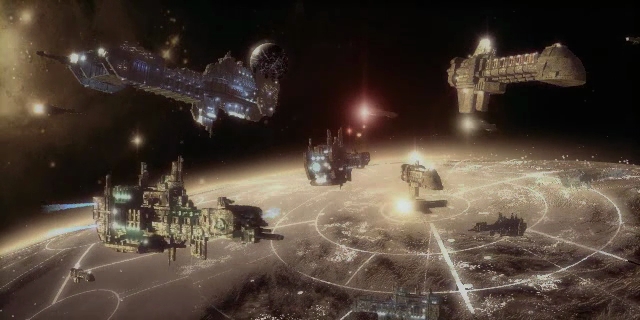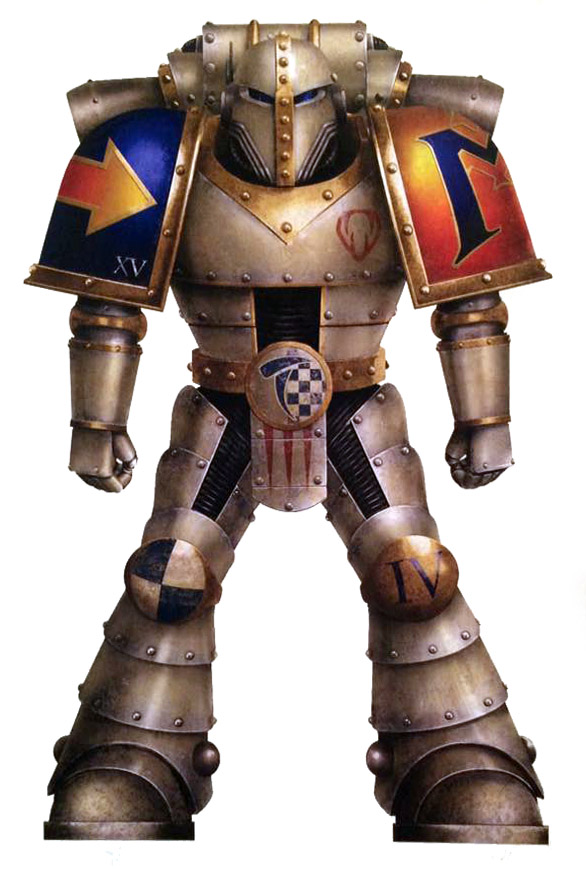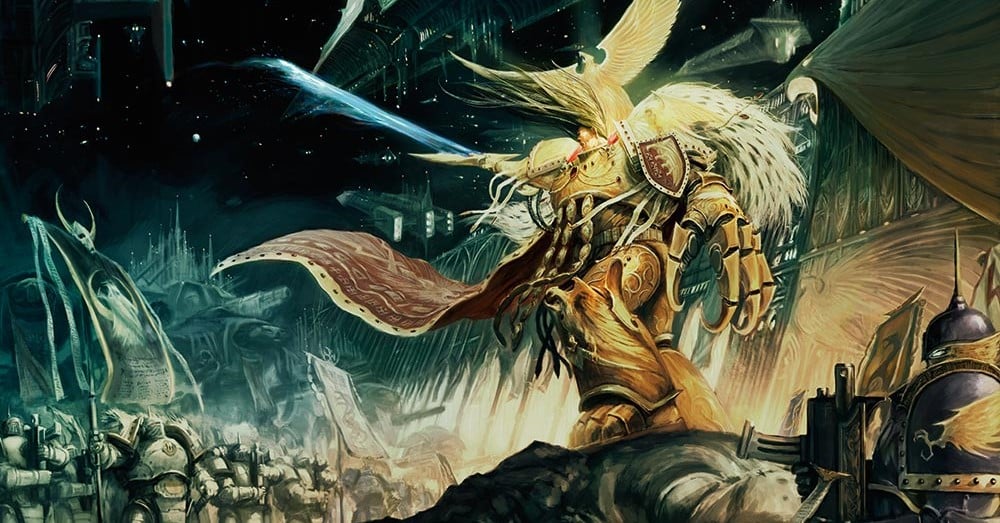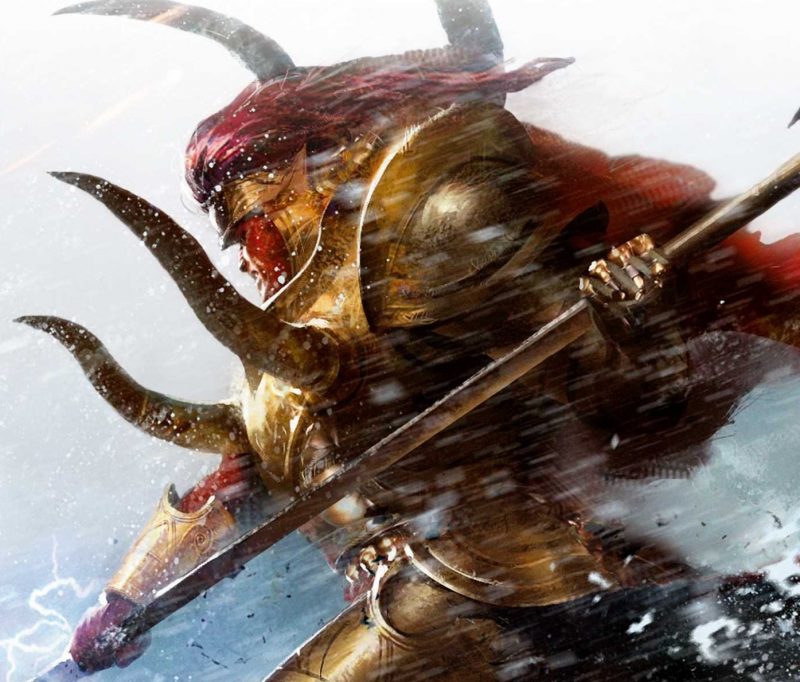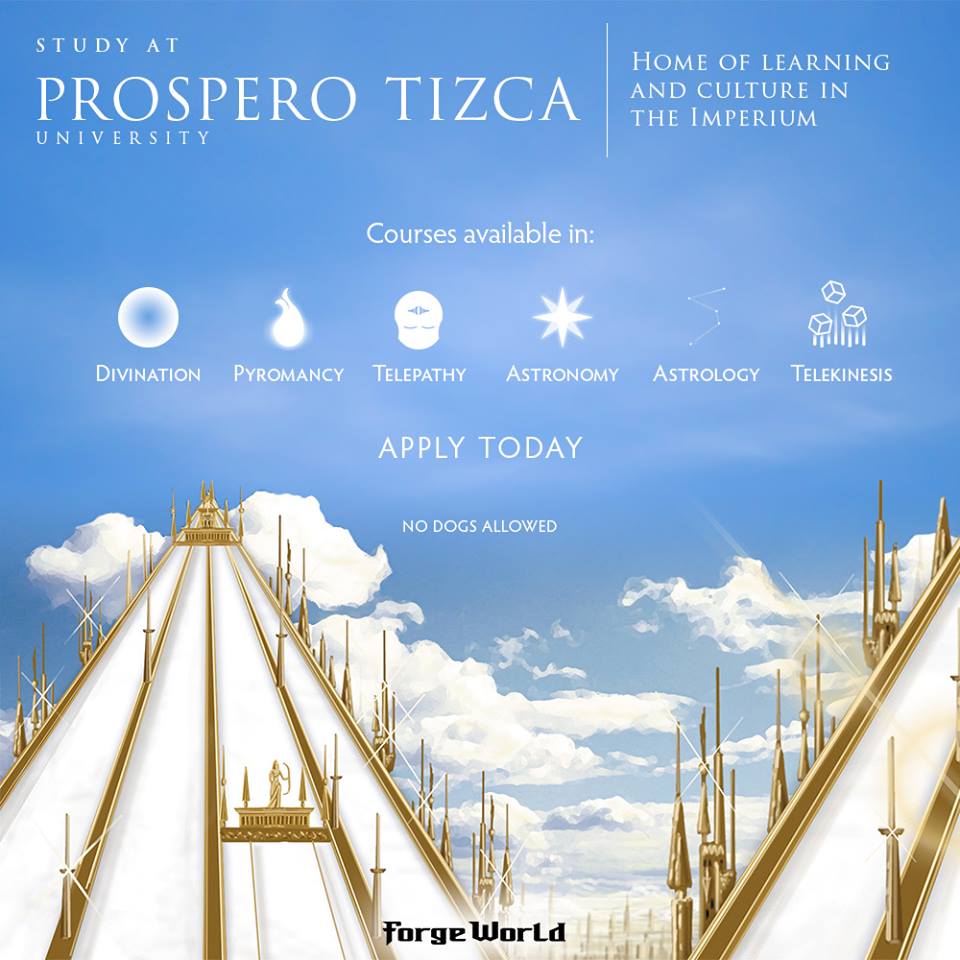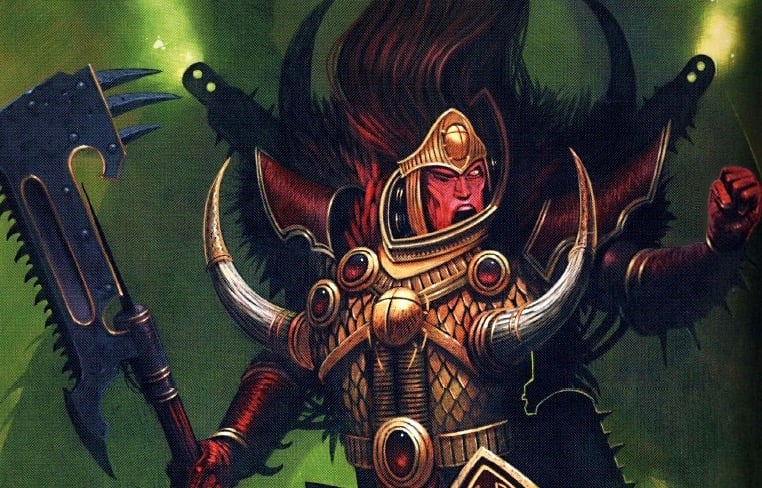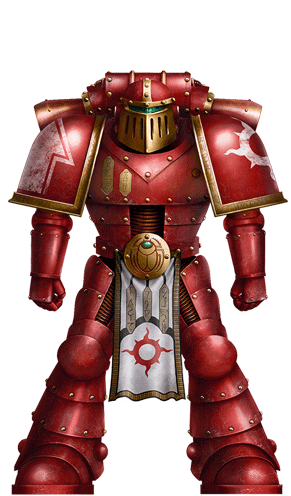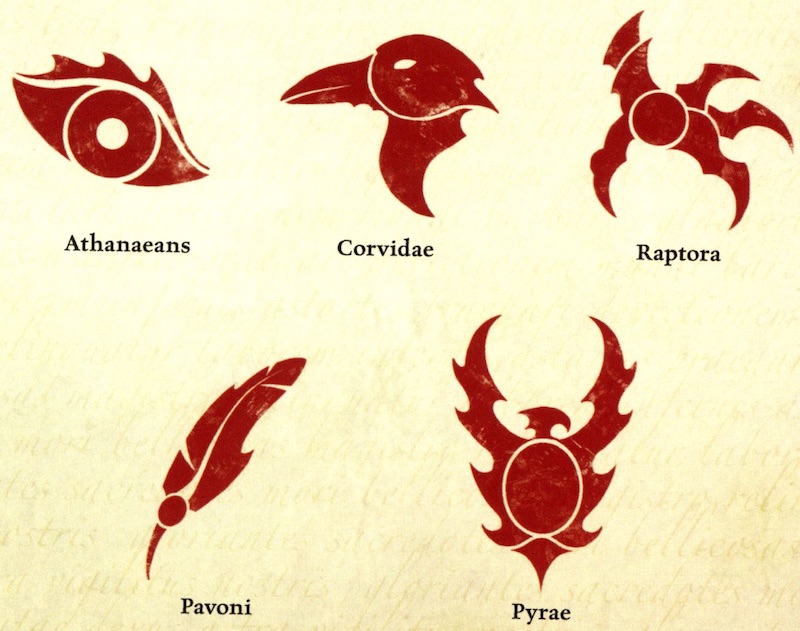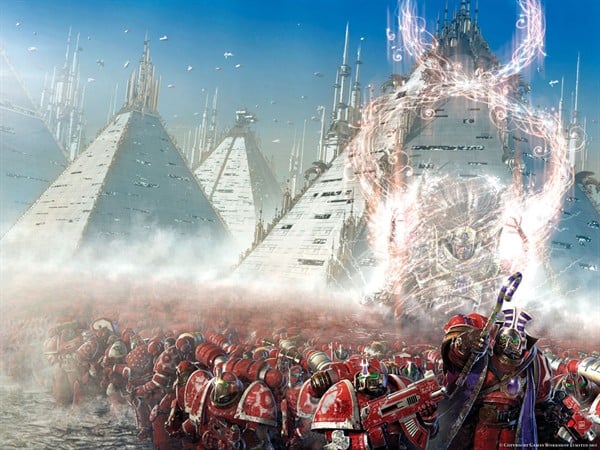Warhammer 40K: When the Thousand Sons Were True

Now the Thousand Sons are traitorous users of forbidden magicks – but once they were amongst the Emperor’s greatest achievements.
Thousand Sons Formation
The Fifteenth Legion was formed on Terra, their gene-seed being created and implanted in the first legionnaires during a brief resurgence of warp-storms within the boundaries of the Sol system itself. This brief warp-storm was said to have generated psychic flashpoints all across Terra’s globe, resulting in outbreaks of madness, suicide, and random violence. Whether it had any effect on the legion’s gene-seed is doubtful, but upon learning of it years later Magnus himself considered it to be a poor omen.
At least part of the initial crop of legionaries – termed student-aspirants – were found amongst the population of the once geopolitical entity known as the Achaemenid Empire. This area of Terra had been under the rule of the Emperor for at least a century at this point, and as a result, had suffered little during the just-completed Wars of Unification. The Emperor himself, accompanied by a retinue of scientists, visited the region and had each and every family tested for compatibility with the Legion XV gene-seed. Those that were found suitable were taken to the gene-laboratories underneath the Himalayas to begin their transformation into Astartes. Present as one of these first student-aspirants was Ahzek Ahriman and his twin brother, Ohrmuzd. Upon completion of this process, the Fifteenth Legion was used to quell what few pockets of isolated resistance to the Emperor’s rule remained upon Terra, before being named the Thousand Sons by the Emperor himself and sent out into the galaxy as part of his Great Crusade. Their name is believed to originate from the first step of the Legion’s creation process; for unknown (but presumably notable, if the Legion was named because of them) reasons, exactly one thousand Marines were created and trained first, with the Fifteenth brought up to full Legion numbers afterward. There only being one thousand Thousand Sons in existence at a point in time is a fact that, tragically, would repeat itself in the future on more than one occasion…
Early Great Crusade
At the beginning of the Crusade, they fought as tenacious and energetic expanders of the Imperium, and were not considered particularly distinct from the main body of the Legiones Astartes. Five years into the Crusade, however, the warriors of the legion – much to their delight – all began to spontaneously develop psychic abilities. This development, however, was followed by a wave of horrific, unwilling degenerative mutations. This mutative process became referred to as the flesh-change, and was much feared by the Thousand Sons after it first appeared during the Compliance of Bezant. Most of those afflicted were secured in stasis chambers in the hope that some future cure would be found for them, and the numbers of active Thousand Sons began to dwindle as a result.
Over the next several decades some of the then-discovered primarchs found the notion of psychic mutants being allowed to exist as part of the Emperor’s Crusade distasteful at best and downright impossible at worst and began to variously move for their censure or spread rumors and condemnations about them. Chief amongst these detractors were Mortarion, Rogal Dorn and Corax. As the years passed, more and more of the Thousand Sons devolved into mutantcy, while those that survived grew stronger and stronger in the use of their powers. Meanwhile, the detractors had managed to raise enough voices to empower a proposal that the Fifteenth Legion be dispanded and expunged from Imperial records altogether.
It was shortly after this that the Great Crusade arrived at Prospero and found Magnus, primarch of the Thousand Sons. The entire legion was transported to Prospero to meet their gene-sire, and there was much rejoicing even though the flesh-change had become a pandemic within their ranks. After the initial celebrations, the Emperor and the main body of his fleet left Prospero, but the Thousand Sons remained behind, the numbers of them degenerating into mutantcy seeming to go completely out of control within a day of the Emperor’s departure. Soon, the entire legion was afflicted. It was at this time that Magnus stepped in to save his gene-sons, enacting a mysterious procedure that was able to stabilize the genetic structure of the least-effected legionnaires. At the end of the procedure, barely a thousand of the Thousand Sons lived.
Post Magnus
With this stabilization of the gene-seed, the Fifteenth Legion got its second chance. Recruiting from Prospero, they were able to rebuild their numbers – though they would never become numerous – and return to the Great Crusade, this time led by their primarch.
While most details of how the Thousand Sons were organized before the coming of Magnus are not currently known, it is recorded that they were not considered particularly different from a typical Legiones Astartes apart from their psychic abilities (which resulted in the legion possessing the most powerful Librarians of the era). When Magnus took command, his directions (influenced by his development on Prospero, as well as Prosperine culture itself) would cause some organizational and hierarchial changes within the legion. Chapters were referred to as Fellowships within the Thousand Sons and the most of these the rebuilt legion was ever able to field numbered 10. However, at the conclusion of one particularly bloody campaign, the Thousand Sons had lost almost 900 Astartes, effectively wiping out an entire Fellowship. Rather than rebuild it, Magnus decided to reorganize and maintain the legion as one of 9 Fellowships, an organization he referred to as the Pesedjet. Two special units were created within the legion; the elite Scarab Occult Terminators and the Hidden Ones of the Scout Auxillia. The legion’s command structure was adapted to include Prosperine philosophy in the form of the Rehati (the coven of Magnus), a second command-track in which the legion’s senior officers were ranked according to psychic ability and influence.
The resurgent Thousand Sons brought their fair share of worlds into compliance with the Imperium of Man, and as such their main method of victory (diplomatic guile and trickery) was not questioned by the body Imperial. However, as the Crusade entered wilder regions of space, more and more hostile forces were encountered that deployed powers similar to those that the psychic warriors of the Thousand Sons wielded. This event, along with the ever-present rumors of ‘witchcraft’ and ‘sorcery’ surrounding the legion, resulted in Mortarion once more raising his voice in condemnation of the Thousand Sons. This time he was joined by Leman Russ, whose long-held distrust of the legion came to a head after he witnessed the return of the flesh-change in the Thousand Sons during a joint action on the world of Shrike. It was decided that Magnus and his legion would be called to account, and the whole matter of Astartes employing psychic powers at all would be ruled upon. This event was known as the Council of Nikea, and at it – after much deliberation – the Emperor announced that no Astartes must ever again employ the use of psychic powers, upon pain of destruction visited upon them by the Emperor himself.
Stunned, the Thousand Sons effectively withdrew from the Crusade, returning to Prospero. It was during the period that followed that Magnus discerned the approach of the Horus Heresy and employed both his own powers and that of his senior legionnaires to try to save his brother’s soul. Failing, he once again marshaled the powers available to him and attempted to psychically warn the Emperor of his favorite son’s betrayal. The Emperor responded with a fleet of sanction dispatched to Prospero to bring his wayward son to account. News of this sanction fleet, meanwhile, had previously reached the ears of the now-corrupted Horus himself. Sensing an opportunity, the Warmaster contacted Leman Russ, commander of the fleet, during the trip to Prospero. Speaking with his brother, he was able to convince him that “to return Magnus to Terra would be a waste of time and effort”. Horus confirmed to his traitorous council of war that he believed this interjection of his into the Emperor’s own decree would result in Magnus never leaving Prospero alive. This action, which went so catastrophically wrong, would doom the Thousand Sons as, in accord with the Judgement of Nikea, the Emperor visited destruction upon Magnus and the Thousand Sons in the form of Leman Russ and his Space Wolves.
Legion Organization
Magnus placed great emphasis on ensuring that legion officers could operate independently from him, going to lengths to ensure they were taught all that he believed they would need to succeed at command, including otherworldly skills. Before the Heresy, the individual Thousand Sons squads were led not by established veteran warriors, but by those who showed the most psychic potential. These junior officers were also effectively apprenticed to more experienced officers for cult training. As a result of the emphasis on leaders having strong psychic ability, senior officers of the legion typically became considerably experienced in both typical battlefield combat and in the use of their powers.
During the Great Crusade and Horus Heresy, Veterans of the Thousand Sons wore the Achean Pattern MkIV Power Armour with distinctive helmets and shoulder pads.
Always a numerically small legion, the Thousand Sons rarely ever took to the field in great numbers. They would normally operate in small detachments, whose leader could effectively hold much more independent authority than officers in comparable positions in other Legions. With the events following the Heresy, this habit has become more pronounced.
Before the Heresy, the Thousand Sons operated several Fellowships roughly equivalent to Companies. While there were originally ten, after the events in the Kamenka Troika the legion was reorganized into nine Fellowships. Each Fellowship was led by a powerful Psyker. Spread out among these Fellowships were several Cults that specialized in different Psychic disciplines.
In addition to the Fellowships, three Red Orders were also fielded by the Legion before the Heresy. These Orders were more devoted to military matters rather than psychic craft or knowledge. The three orders were the Order of Ruin, known as the Unmakers, which specialized in siegecraft and logistics. The second was the Order of the Jackal, known as the Measure of Life and Death, which operated the Legion’s Dreadnoughts and Khenetai Occult. The third was the Order of Blindness, known as the Hidden Ones, which fell under the command of Amon and operated the Hidden Ones and Ammitara Occult of the Legion.
Culture
For the Thousand Sons, knowledge is power, and the most knowledgeable the most powerful. Arising from the origins of their first recruits and being driven by the early legion’s need to discover a cure for the flesh-change and gain deeper understanding and control of their psychic abilities, these linked beliefs resulted in two major cultural factors developing in the Thousand Sons; veneration of the text and veneration of their Primarch.
The legion’s desire to learn how to control their powers developed into a hunger for any and all knowledge. Driven from an origin of self-interest, their desire to know as much as possible and master every discipline available to learn caused them to seek shortcuts or explore morally perilous paths, especially once Magnus and his own insatiable hunger for knowledge encouraged them to progress from simple scholarship into the practice of sorcerous techniques. As a result, they have long held every record of information as a valuable item in itself, as well as a resource to be drained.
Learn MUCH More of the Thousand Sons
Lexicanum
~The ultimate question – was the Legion tainted from the start, or betrayed by the Warmaster?

